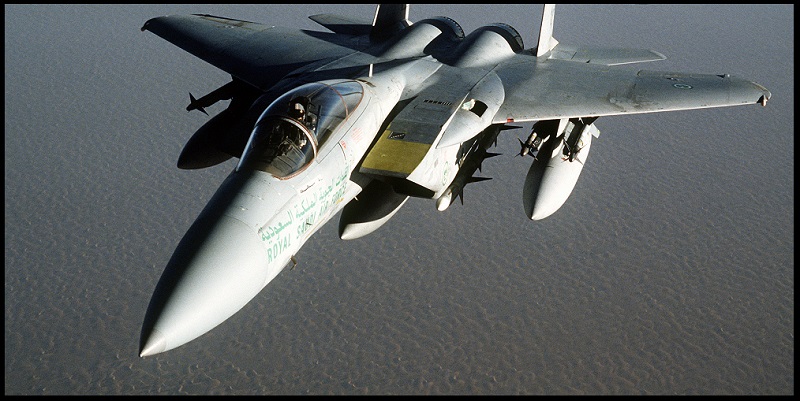
Table of Contents
Buckle up, aviation enthusiasts, as we delve into the supersonic world of the fastest fighter jets of 2024. Speed, agility, and firepower – these are the holy trinity of fighter jets, the aerial warriors that dominate the skies. Every year, nations push the boundaries of technology, and 2024 is no exception. While raw speed isn’t the only factor in a fighter’s prowess, it remains a captivating metric that sparks awe and ignites curiosity.
Fastest Doesn’t Equal Best: Understanding the Nuances
Before we zoom into the speedsters, let’s acknowledge that “fastest” doesn’t translate to “best” outright. Fighter jets are complex machines designed for diverse missions, and factors like maneuverability, stealth, and sensor technology are equally crucial. However, speed has undeniable advantages, from rapid interception and escape to outrunning missiles and achieving surprise attacks.
Fastest Fighter Jets of 2024
1. The Undisputed Champion: NASA X-43A (Mach 9.8)
Technically not a fighter jet, this experimental research aircraft holds the crown for the fastest air-breathing winged vehicle ever. Clocking in at a mind-boggling Mach 9.8, almost ten times the speed of sound, the X-43A redefined supersonic possibilities. While not operational, it paved the way for future hypersonic technologies.
2. Legendary Blackbird: Lockheed SR-71 (Mach 3.2)
This iconic reconnaissance aircraft, retired in 1998, is still fondly remembered for its sleek design and blistering speed. Cruising at Mach 3.2, nearly three times the speed of sound, the SR-71 could outrun missiles and capture detailed photographic intelligence before anyone knew it was there. Its legacy continues to inspire advancements in high-speed reconnaissance.
3. Cold War Supersonic Duo: MiG-25 Foxbat and MiG-31 Foxhound (Mach 2.83 and 2.83)
Products of the Soviet Union’s Cold War ambitions, these interceptors boast impressive speeds of Mach 2.83. While primarily designed for reconnaissance and high-altitude interception, their speed and powerful radars made them formidable opponents. Though largely retired, they demonstrate the USSR’s engineering prowess in supersonic design.
4. The American Eagles: McDonnell Douglas F-15 Eagle (Mach 2.5)
A veteran still soaring high, the F-15 Eagle has been in service for nearly 50 years, a testament to its adaptability and enduring performance. This iconic air superiority fighter reaches speeds of Mach 2.5, making it a force to be reckoned with. Its maneuverability, advanced avionics, and extensive weapons capabilities solidify its position as a global powerhouse.
5. Raptor’s Reign: Lockheed Martin F-22 Raptor (Mach 2.25)
The first and only operational 5th generation fighter jet, the F-22 Raptor remains a symbol of American air dominance. While its official top speed is classified, estimates place it around Mach 2.25. Its true strength lies in its combination of stealth, supercruise (sustaining supersonic speeds without using afterburners), and advanced avionics, making it nearly invisible and incredibly difficult to engage.
6. The Dragon Ascends: Chengdu J-20 (Mach 2.2)
China’s answer to the F-22, the J-20 is shrouded in some secrecy, but its estimated top speed of Mach 2.2 makes it a contender in the high-speed arena. This 5th generation fighter boasts stealth features and advanced avionics, signifying China’s growing ambitions in aerial technology.
7. European Prowess: Eurofighter Typhoon (Mach 2.0)
A collaborative effort by several European nations, the Typhoon is a multirole fighter known for its speed, agility, and advanced weapons systems. Reaching speeds of Mach 2.0, it excels in air-to-air combat, ground attack, and reconnaissance missions, serving as a vital asset for its partner nations.
8. Russian Rival: Sukhoi Su-35 Flanker-E (Mach 2.25)
An upgrade of the Su-27 Flanker, the Su-35 boasts several enhancements, including a top speed of Mach 2.25. This multirole fighter offers a potent combination of speed, maneuverability, and advanced avionics, making it a significant player in the Russian Air Force.
The supersonic realm is just the beginning. Nations are now pushing the boundaries of hypersonic flight, aiming for speeds exceeding Mach 5.
Beyond Supersonic: The Stealthy Revolution
While raw speed is impressive, modern warfare demands more than just a Mach number. Stealth technology, allowing aircraft to evade radar detection, has become a crucial factor in modern air combat. This introduces a new dimension to our comparison, with contenders like:
1. Lockheed F-22 Raptor: This American fifth-generation fighter incorporates advanced stealth technology, making it virtually invisible to radar. Its top speed of Mach 2.25 is impressive, but its true strength lies in its stealth and maneuverability. The F-22 remains the most advanced operational fighter jet in the world, showcasing the power of stealth technology.
2. Lockheed F-35 Lightning II: This fifth-generation fighter, also American, is designed for multirole capabilities. While its top speed of Mach 1.6 is lower than the F-22, its advanced avionics, sensor fusion, and stealth capabilities make it a formidable opponent. The F-35’s affordability and versatility have led to its widespread adoption by numerous countries.
3. Chengdu J-20: This Chinese fifth-generation fighter is shrouded in some secrecy, but its estimated top speed of Mach 2.5 makes it a contender. Its unique design incorporates advanced stealth features, and while its capabilities are still being evaluated, it represents a significant advancement for Chinese aviation.
4. Sukhoi Su-57 Felon: This Russian fifth-generation fighter boasts a top speed of Mach 2.15 and advanced stealth features. However, its development has faced challenges, and questions remain about its operational capabilities compared to the F-22 and F-35. Nonetheless, the Su-57 marks a significant step forward for Russian aviation and represents a force to be reckoned with in the skies.
The Future of Fighter Jets: Looking Ahead
The race for faster, more capable fighter jets is far from over. Several projects are pushing the boundaries of technology, including hypersonic jets exceeding Mach 5 and autonomous drone fighters. These advancements promise to redefine aerial warfare and necessitate constant adaptation and innovation.
Hypersonic Technology: The X-43’s record-breaking speed highlights the potential of hypersonic technology, exceeding Mach 5. Hypersonic fighters could revolutionize air combat, offering unparalleled speed and maneuverability. While still in early stages, research into hypersonic propulsion systems is actively progressing.
Sixth-Generation Fighters: The next generation of fighters is already on the drawing board, promising even more advanced capabilities. These aircraft are expected to incorporate artificial intelligence, advanced sensor fusion, and even greater levels of stealth. The United States, China, and Russia are all actively developing sixth-generation fighters, with prototypes expected to emerge in the coming years.
Unmanned Combat Aerial Vehicles (UCAVs): Drones are playing an increasingly important role in modern warfare, and UCAVs specifically designed for air-to-air combat are being developed. These highly maneuverable and potentially stealthy drones could change the nature of aerial warfare, raising ethical and operational questions along the way.
Beyond the Speed: A Balanced Perspective
It’s crucial to understand that “fastest” doesn’t equate to “best” in the complex world of fighter jets. While raw speed has its place, factors like stealth, maneuverability, sensor fusion, operational range, and overall combat effectiveness play equally important roles. The most suitable fighter jet depends on specific needs and strategic considerations.
Fighter Jets in the Crucible of Conflict
While headlines often fixate on top speeds and technical specs, fighter jets’ true test lies not in sterile test environments, but in the unforgiving crucible of real-world conflict. Here’s a glimpse into how different warbirds have carved their names in the annals of aerial combat:
The Air-to-Air Arena:
- F-15 Eagle: This American icon, soaring for over five decades, has never lost an air-to-air engagement. From the skies over Vietnam to the deserts of Iraq, the F-15’s long-range radar, powerful engines, and maneuverability have proven lethal against MiG fighters. Its role in Operation Desert Storm, downing numerous Iraqi aircraft, cemented its reputation as an air dominance master.
- MiG-21: This Soviet-era workhorse saw action in countless conflicts, from the Vietnam War to the Falklands War. While not as technologically advanced as its Western counterparts, its affordability and ease of maintenance made it a popular choice. Its agility and small size made it a challenging opponent, showcasing the value of tactics and pilot skill even against seemingly inferior technology.
- Dassault Rafale: This French multirole fighter has seen action in Afghanistan, Libya, and Mali, performing diverse missions beyond air-to-air combat. In 2018, Rafales successfully intercepted and destroyed Syrian Su-24 bombers, demonstrating their air-to-air capabilities. Its versatility and advanced avionics make it a valuable asset in modern conflicts.
Beyond Dogfights: The Multirole Mission
Modern fighter jets have transcended the role of air-to-air combat, evolving into multirole platforms capable of tackling diverse tasks:
- F-35 Lightning II: This American marvel, despite early challenges, has seen action in the Middle East and Africa. Its advanced sensor fusion, stealth capabilities, and diverse weapon systems allow it to perform air-to-air, air-to-ground, and intelligence gathering missions with ease. Its deployment in Operation Inherent Resolve against ISIS showcased its multirole prowess.
- Sukhoi Su-35S Flanker-E: This Russian fighter, an upgrade of the Su-27, has seen action in Syria. Its powerful engines, maneuverability, and diverse weapons payload make it a formidable opponent. While primarily an air-to-air fighter, its ground attack capabilities were displayed in Syria, highlighting the evolving role of modern warbirds.
- JAS 39 Gripen: This Swedish fighter, known for its affordability and performance, has seen action in Afghanistan and Libya. Its agility and diverse weapon systems make it adept at close air support and air-to-ground missions. Gripen’s deployment in Libya demonstrated its effectiveness in supporting ground troops, illustrating the importance of multirole capabilities in modern conflicts.
Frequently Asked Questions (FAQs):
Q: What is the fastest fighter jet in the world?
A: Defining the “fastest” depends on criteria. The NASA X-43 holds the record for the fastest air-breathing aircraft at Mach 9.8, but it’s not a fighter. In operational fighters, the Lockheed SR-71 Blackbird cruised at Mach 3.2, while several active fighters like the F-15 Eagle (Mach 2.5+) and MiG-31 Foxhound (Mach 2.83) boast impressive speeds.
Q: What is the stealthiest fighter jet?
A: Stealth technology goes beyond raw speed. The Lockheed F-22 Raptor remains the most advanced operational fighter with superior stealth capabilities. The F-35 Lightning II and Chengdu J-20 also incorporate stealth features, with the latter shrouded in some secrecy.
Q: What’s the next generation of fighter jets like?
A: Sixth-generation fighters are in development, promising advancements in AI, sensor fusion, and even greater stealth. Prototypes are expected in the coming years, potentially revolutionizing aerial combat.
Q: Are drones replacing fighter jets?
A: While Unmanned Combat Aerial Vehicles (UCAVs) play an increasing role, they don’t currently replace fighter jets. UCAVs often lack the maneuverability and pilot decision-making required for complex air combat situations.
Q: What are the ethical concerns surrounding hypersonic fighters?
A: Hypersonic weapons raise concerns about the speed of escalation and potential for accidental conflict. Additionally, their destructive power necessitates careful consideration of their use and international regulations.
Q: Which country has the fastest fighter jet?
A: This depends on how you define “fastest.” If we consider raw speed, the NASA X-43 reigns supreme. However, for operational fighter jets, the contenders are mostly American (F-22, F-35) with notable advancements from China (J-20) and Russia (Su-57).
Q: Are there any faster jets in development?
A: Yes, several hypersonic projects are pushing the boundaries of speed, aiming to exceed Mach 5. Additionally, ongoing advancements in stealth technology and autonomous capabilities promise significant changes in the future of fighter jets.
Q: Which fighter jet is the most powerful?
A: Defining “power” is complex. While the F-22 boasts powerful engines and impressive maneuverability, the F-35’s sensor fusion and multirole capabilities offer versatility. Additionally, stealth technology grants significant advantages in modern warfare. Ultimately, the “most powerful” depends on mission requirements and strategic context.
Conclusion:
Who’s the Fastest?
As you can see, there’s no single answer to the question of “fastest fighter jet.” Each contender brings unique strengths and capabilities to the table. The X-43 reigns supreme in raw speed, while the Blackbird stands as a testament to Cold War engineering prowess. For operational fighters, the F-15 remains a formidable force, while the F-22 and F-35 represent the pinnacle of stealth technology. Ultimately, the “best” fighter jet depends on the specific needs and priorities of the air force operating it.
This exploration has hopefully provided a glimpse into the fascinating world of fighter jets, highlighting the incredible machines and technologies that shape the skies above us. As the quest for speed and innovation continues, one thing is certain: the future of air combat promises to be even more exciting and unpredictable.
The world of fighter jets is a fascinating domain, showcasing the pinnacle of human innovation and engineering prowess. Understanding the diverse contenders, their unique strengths, and the evolving landscape of this industry provides valuable insights into the ever-changing world of aerial warfare. While speed remains a captivating factor, it’s essential to recognize the intricate interplay of various technologies and strategic considerations that shape the future of these magnificent machines.
You can also read about Industrial Decarbonization Technologies.







